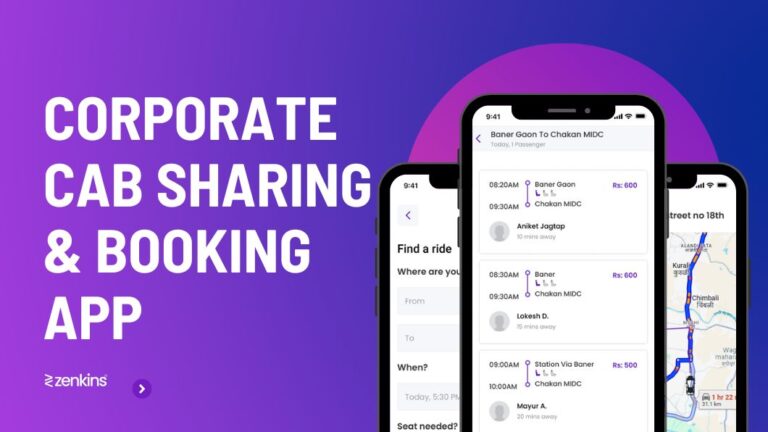Transport Management Software (TMS): A Case Study
Table of Contents
Transportation management is a critical aspect of any logistics operation, involving the planning, execution, and optimization of freight movements. With the advancement of technology, traditional manual methods of managing transportation have given way to more efficient and automated solutions. Transport Management Software (TMS) is one such solution that has revolutionized the way businesses handle their transportation operations.
Introduction to Transport Management Software (TMS)
Definition and Purpose of TMS
Transport Management Software, or TMS, is a powerful tool that helps businesses effectively manage their transportation operations. It is a software solution that streamlines and automates various tasks involved in transportation, such as freight management, route planning, load optimization, and documentation. TMS ensures efficient coordination between different stakeholders, including shippers, carriers, and customers, resulting in smooth and cost-effective transportation operations.
Evolution of TMS in Transportation Industry
Transportation management has come a long way from manual paperwork and endless phone calls. The evolution of TMS can be attributed to advancements in technology and the need for businesses to keep up with the growing demands of the transportation industry. In the past, companies relied heavily on spreadsheets and manual processes to manage their transportation activities. Today, TMS offers a comprehensive and automated solution that improves efficiency, reduces costs, and enhances customer satisfaction.
Key Features and Benefits of TMS
Centralized Freight Management
One of the key features of TMS is its ability to centralize freight management. It provides a single platform where businesses can manage all aspects of their transportation operations, including order processing, carrier selection, freight tracking, and invoice reconciliation. This centralized approach simplifies the process, reduces errors, and increases efficiency.
Real-time Tracking and Visibility
TMS enables real-time tracking and visibility of shipments, allowing businesses to have complete visibility into their transportation operations. With GPS technology and integration with carriers, businesses can track shipments at every stage of the journey. This level of visibility helps in proactively addressing any delays or issues, improving customer service and overall supply chain efficiency.
Automated Route Planning and Optimization
Gone are the days of manually planning routes and juggling multiple factors such as delivery windows, vehicle capacities, and traffic conditions. TMS automates the route planning process and optimizes it based on various parameters, including cost, distance, and delivery time. This automation saves time, reduces fuel consumption, and improves overall route efficiency.
Efficient Load Optimization and Consolidation
TMS allows businesses to optimize and consolidate loads, maximizing the utilization of available space in trucks or containers. By analyzing shipment data and considering factors like weight, volume, and compatibility, TMS recommends the most efficient way to load goods. This optimization leads to reduced transportation costs and better asset utilization.
Streamlined Documentation and Compliance
TMS streamlines the documentation and compliance process by automating tasks such as generating shipping labels, bills of lading, and customs forms. It ensures that all necessary documentation is in place, reducing the risk of errors and delays. Additionally, TMS keeps businesses in compliance with regulatory requirements, making it easier to meet industry standards and avoid penalties.
About the Client
Our client, a leading logistics company, faced challenges in coordinating its fleet, experiencing delays, and grappling with inefficient routing. Recognizing the need for an advanced solution, they sought a Transport Management Software (TMS) to enhance route planning, monitor vehicle status, and optimize overall transportation logistics.
Project Overview
The project aimed to develop a cutting-edge Transport Management Software using .NET to address the client’s challenges. The primary objectives included real-time tracking of vehicles, dynamic route optimization, efficient communication between drivers and dispatchers, and the integration of analytics to identify areas for improvement.
The Challenges
- Coordination Issues: Lack of effective coordination led to delays and disruptions in transportation operations.
- Inefficient Routing: Existing routing strategies were suboptimal, affecting fleet efficiency and timely deliveries.
- Limited Communication: Inadequate communication channels between drivers and dispatchers hindered real-time decision-making.
The Solution
Our expert team of developers and project managers collaborated to design and implement a comprehensive .NET-based Transport Management Software (TMS). The solution incorporated features such as real-time vehicle tracking, dynamic route optimization, and communication tools to streamline operations.
Key Features of the TMS
- Real-time Vehicle Tracking: The Transport Management Software enabled real-time tracking of vehicles, providing visibility into their current status and location.
- Dynamic Route Optimization: Advanced algorithms optimized routes dynamically, considering factors like traffic, weather, and delivery schedules.
- Communication Tools: The software facilitated efficient communication between drivers and dispatchers, ensuring seamless coordination.
- Analytics Integration: Robust analytics tools were integrated to provide insights into operational efficiency and identify areas for improvement.
The Outcome
The Transport Management Software was successfully deployed, resulting in significant improvements in the client’s transportation logistics. Real-time tracking enhanced visibility, dynamic route optimization reduced delays, and improved communication streamlined operations.
Future Trends and Innovations in TMS
Integration with Internet of Things (IoT)
In the future, Transport Management Software is expected to integrate with the Internet of Things (IoT) to enhance transport management capabilities. By leveraging IoT devices and sensors, organizations can gather real-time data on vehicles, shipments, and traffic conditions. This will enable proactive decision-making, efficient routing, and improved supply chain visibility.
Artificial Intelligence and Machine Learning
Artificial intelligence (AI) and machine learning (ML) are poised to revolutionize TMS by offering predictive analytics and automated decision-making. AI algorithms can analyze vast amounts of data to optimize routes, predict demand, and identify potential disruptions. ML algorithms can continuously learn from data, enabling TMS to adapt and improve over time.
Blockchain Technology for Transparency and Security
Blockchain technology holds promise for enhancing transparency and security in transport management. By using blockchain’s decentralized and immutable ledger, organizations can ensure greater visibility and traceability of goods, reducing the risk of fraud and unauthorized access. This technology also enables secure and instant transactions between stakeholders.
Sustainability and Green Initiatives
As sustainability becomes increasingly important, TMS is expected to incorporate features that support green initiatives. This includes optimizing route planning for fuel efficiency, reducing empty miles, and promoting the use of alternative fuels and eco-friendly transportation modes. By embracing sustainability, organizations can reduce their carbon footprint and contribute to a greener future.
Conclusion
Our team’s proficiency in developing a tailored Transport Management Software using .NET technologies addressed the client’s challenges effectively. The implementation of real-time tracking, dynamic route optimization, and communication tools contributed to a more efficient and streamlined transportation operation.
Transport Management Software (TMS) has emerged as a game-changer in the field of transportation management. Its centralized approach, real-time tracking capabilities, automation, and optimization features have revolutionized the way businesses handle their freight movements. Through the case study presented, we have witnessed the tangible benefits and positive impact that TMS brings to transportation operations, including improved efficiency, enhanced visibility, cost reduction, and increased customer satisfaction.
However, the implementation of TMS is not without its challenges, requiring careful planning, stakeholder involvement, and continuous monitoring. By following the best practices discussed, businesses can ensure a successful adoption of TMS and unlock its full potential. As we look to the future, TMS will continue to evolve, integrating with emerging technologies such as IoT and AI, further enhancing its capabilities. It is clear that TMS is here to stay, shaping the future of transportation management and driving operational excellence in the logistics industry.




